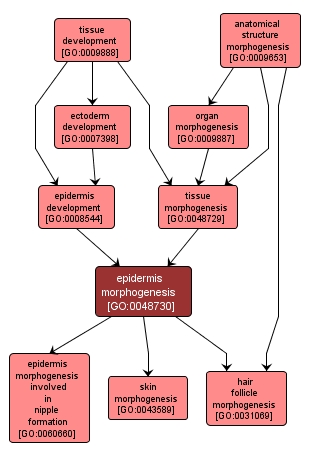| Desc: |
The process by which the anatomical structures of the epidermis are generated and organized. Morphogenesis pertains to the creation of form. The epidermis is the outer epithelial layer of a plant or animal, it may be a single layer that produces an extracellular material (e.g. the cuticle of arthropods) or a complex stratified squamous epithelium, as in the case of many vertebrate species. |














